

RAZORCAT TESSY
Automated testing of embedded software
Video: TESSY basics
TESSY automates the whole unit test cycle including regression testing for your embedded software in C/C++ on different target systems. As an easy-to-install and easy to operate testing tool TESSY guides you through the unit test workflow from the project setup through the test design and execution to the result analysis and reporting. TESSY takes additionally care of the complete test organization as well as the test management, including requirements, coverage measurement, and traceability.
The following figure describes TESSY's core feature. If you want to learn more about TESSY, please contact us.
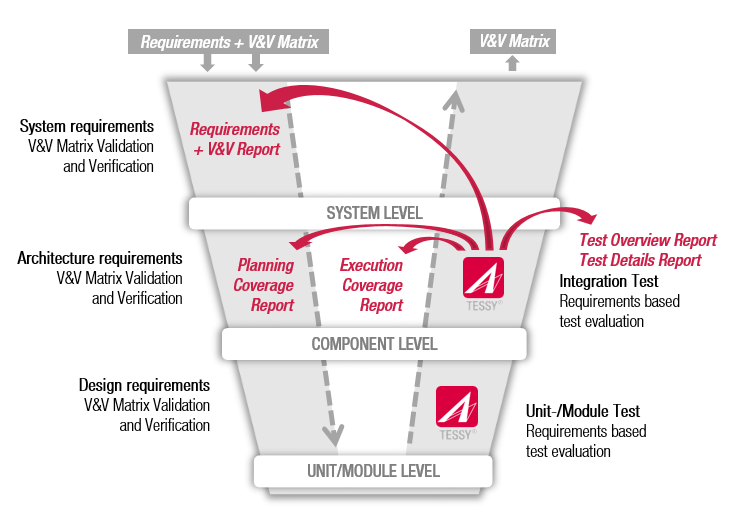
Manage your test project
The TESSY test project management feature provides the possibilty to define an individual test project structure based on collections and folders, to define environment variables, and to configure your desired compiler/debugger with the help of the integrated Test Environment Editor. The coverage results are displayed directly within the project structure and the test results are stored within test runs which allows keeping former (successful) results for reporting while continuing to work on test cases and test data.
Define, link and trace requirements
TESSY provides a basic management of requirements in a document structure. Furthermore it is possible to import Requirements e.g. from DOORS via CVS and XML files. Requirement and validation results may also be exported into XML and ReqIF format. Reference mechanisms from test cases back to the requirements allow easy coverage analysis and reports as well as impact analysis of requirements changes. Tests (in detail modules, test objects and test cases) may be linked to requirements within a convenient requirements coverage view.
Design test cases within the Classification Tree Editor (CTE)
Design test cases using the Classification Tree Method (CTM) and apply the CTM within the graphical user interface of the Classification Tree Editor (CTE). Since the CTE is integrated in TESSY it is easy to set the values needed in the TESSY test process (e.g. input/output) directly within the CTE.
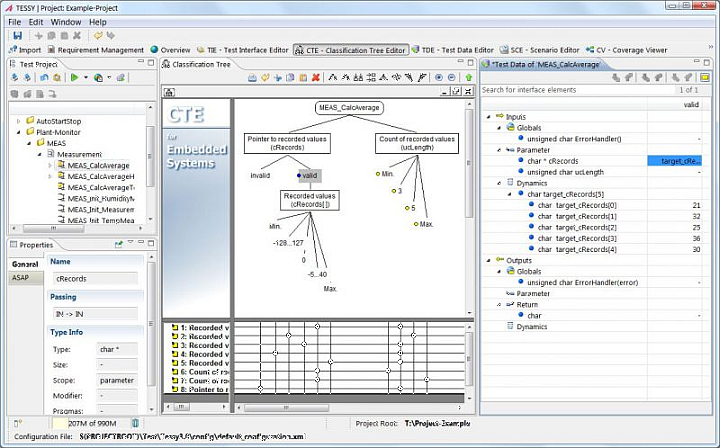
Edit test data within the tabular Test Data Editor (TDE)
With the help of the Test Data Editor (TDE) the editing of test data is simplified. Additionally the test data are visualized within plots.
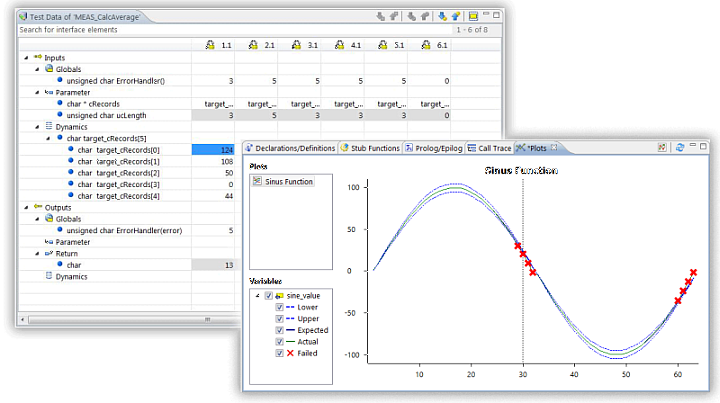
Add additional code
The Usercode editor is an integral part of the TDE perspective and provides flexible editing and outline views together with the tabular test data viewer, e.g. you have the possibility to read/write registers or add individual stub code.
TESSY Software Variant Management
Testing variants
With the fourth generation of TESSY it is now an easy task to test code variants. Hierarchical variant trees are created by derived modules. This allows an automatic testing of base and derived variants with selected test cases in a short period of time. For the tests, to indicate the relationship to a specific code variant, modules can be assigned to variants. Test cases within the derived variant modules can be added, deleted and individual test data values can be applied. Changes on the base variant can easily be synchronized down to the derived variant modules. The software variant management of TESSY V4.0 enables a product-specific code of a product series with different variations to be analyzed and tested individually in an efficient way.
Analyze the test results
Colored values within the TDE which correspond to the state of the test results, the visualization of test results within plots, and the Coverage Viewer (CV) with the function flow and details about the coverage help to analyze the test results.
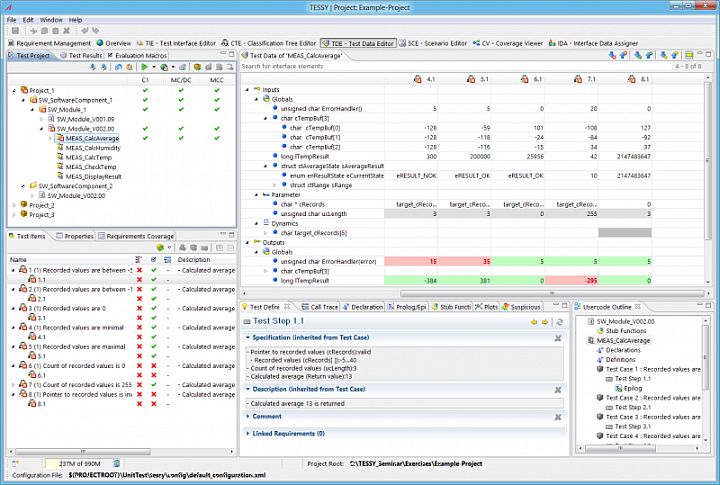
Test your components
Define scenarios in the Scenario Editor (SCE) and test components. All variables of the component interface may be set and checked at arbitrary points in time within the scenario.
Report the test plan and the test results
TESSY offers different types of automatically created and well-designed test reports in PDF. Report your requirements, the V&&V matrix, the test planning coverage (=planned requirement coverage), the test execution coverage, and the test overview and test details.
Download TESSY
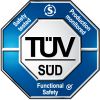
TESSY is qualified for safety-related software development according to IEC 61508 and ISO 26262.
View Certification Report
Your benefits
- One installation/one tool to manage the test process
- Efforts to log and manage data as well as to create reports and keep everything up to date are reduced to a minimum.
- By reducing manual tasks to a minimum, the verification process becomes scalable, transparent and less susceptible to errors.
- TESSY's reporting features allow to easily create commonly accepted reports for authorities
- The user friendly presentation of the data helps you to focus your attention on your tests and to explore the test workflow. Thus no time will be wasted for searching information
Supported compiler / debugger
Take a look at the matrix of supported tools and targets.
If your tool is not supported by now or if you need help with the setup of your environment or if you have any further questions please send us your request.
Phone: +43 699 12300010
Revised graphical user interface (GUI)
The new TESSY GUI provides easy access to all functionalities within multiple perspectives and views on the test data. All TESSY tools are integrated as individual perspectives within one application.
Handle coverage measurements
All available coverage measurements (C1, MC/DC, MCC) may be switched on or off and a minimum required coverage may be defined for individual test objects.
Application Programming Interface (API) and command line interface
An API for the project database (PDB) and the test database (TDB) is available, enabling the user to write scripts (e.g. using a DOS shell), to modify this information, or to add new modules with all necessary settings (e.g. source files, include paths, defines) into the project database. A command line executable provides all commands of the API for usage within DOS batch files.
Automate tests and set up regression tests
The integrated batch shell supports own scripts to realize automated testing. Based on the internal test database the backup and restore of tests is easy.
